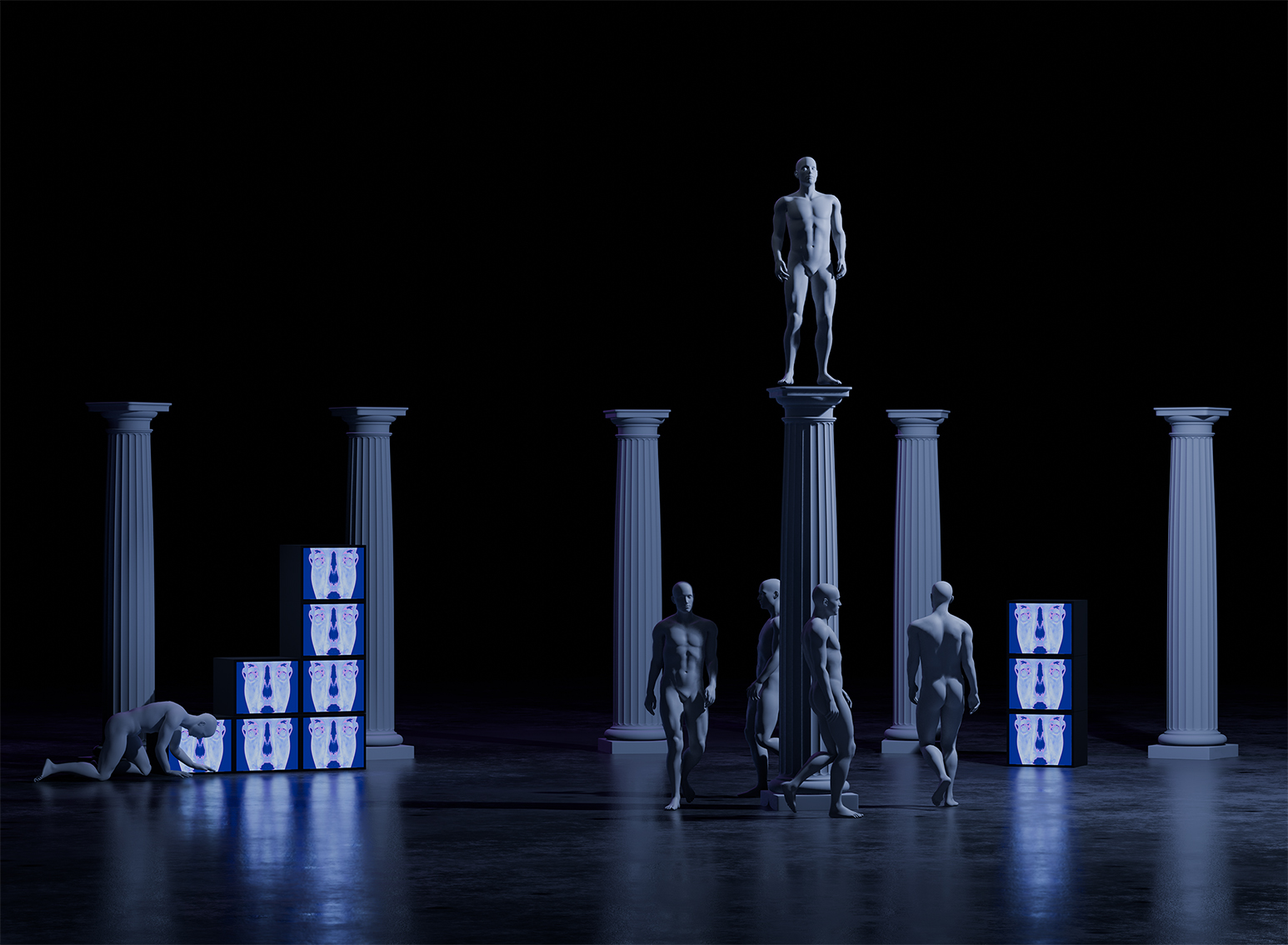
rhythm
The 3D video animation rhythm is a theatrical staging of periodically recurring societal patterns. In doing so, Dominik Geis primarily explores the gestures and role models associated with masculinity; digitally animated figures are assigned specific movements and postures that reflect and question these representations. As early as the beginning of the 20th century, French sociologist and ethnologist Marcel Mauss demonstrated how deeply cultural practices are inscribed in the body, showing that posture and movement are largely socially constructed. Male behaviour and gesture, then, do not follow a "natural" repertoire but rather reproduce culturally ingrained behavioural patterns and embodied techniques. The body becomes a projection surface for societal power dynamics.
A digital stage provides the framework for this performance. Within the scenography of televisions and layered visuals, found footage collages unfold. Animated figures move through this space, creating a simultaneous stage that merges visual and performative dimensions. A continuous tracking shot through the scene generates the video, producing a fluid narrative driven by the interplay of image and sound. The original musical composition for the piece forms the basis of its choreographic rhythm. Pulsing beats, distorted sounds and atmospheric textures build in overlapping layers, evolving into an increasingly dense sonic landscape.
3D Videoanimation, 16:9, HD, Sound, 20:10 Min. 2025
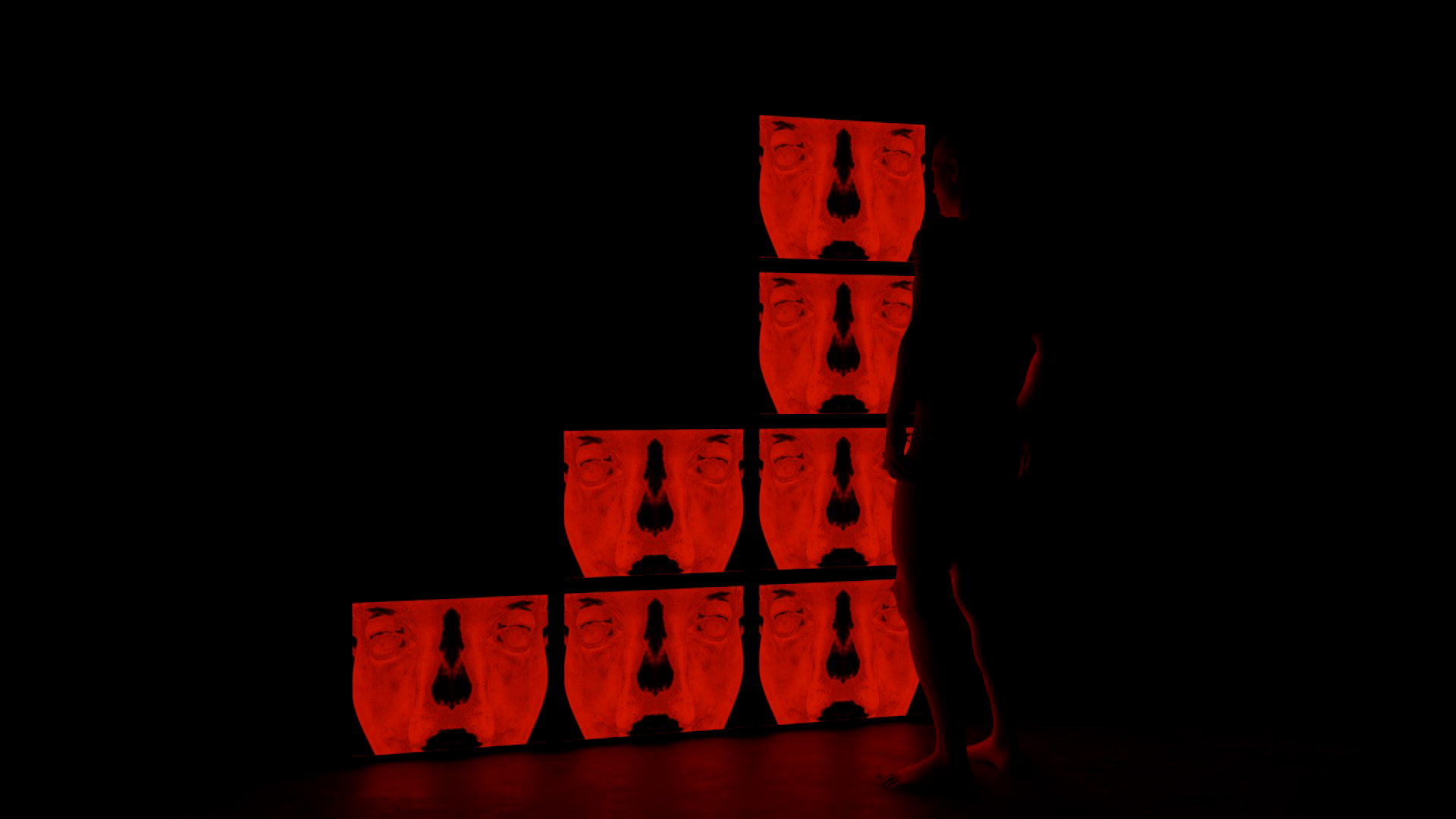
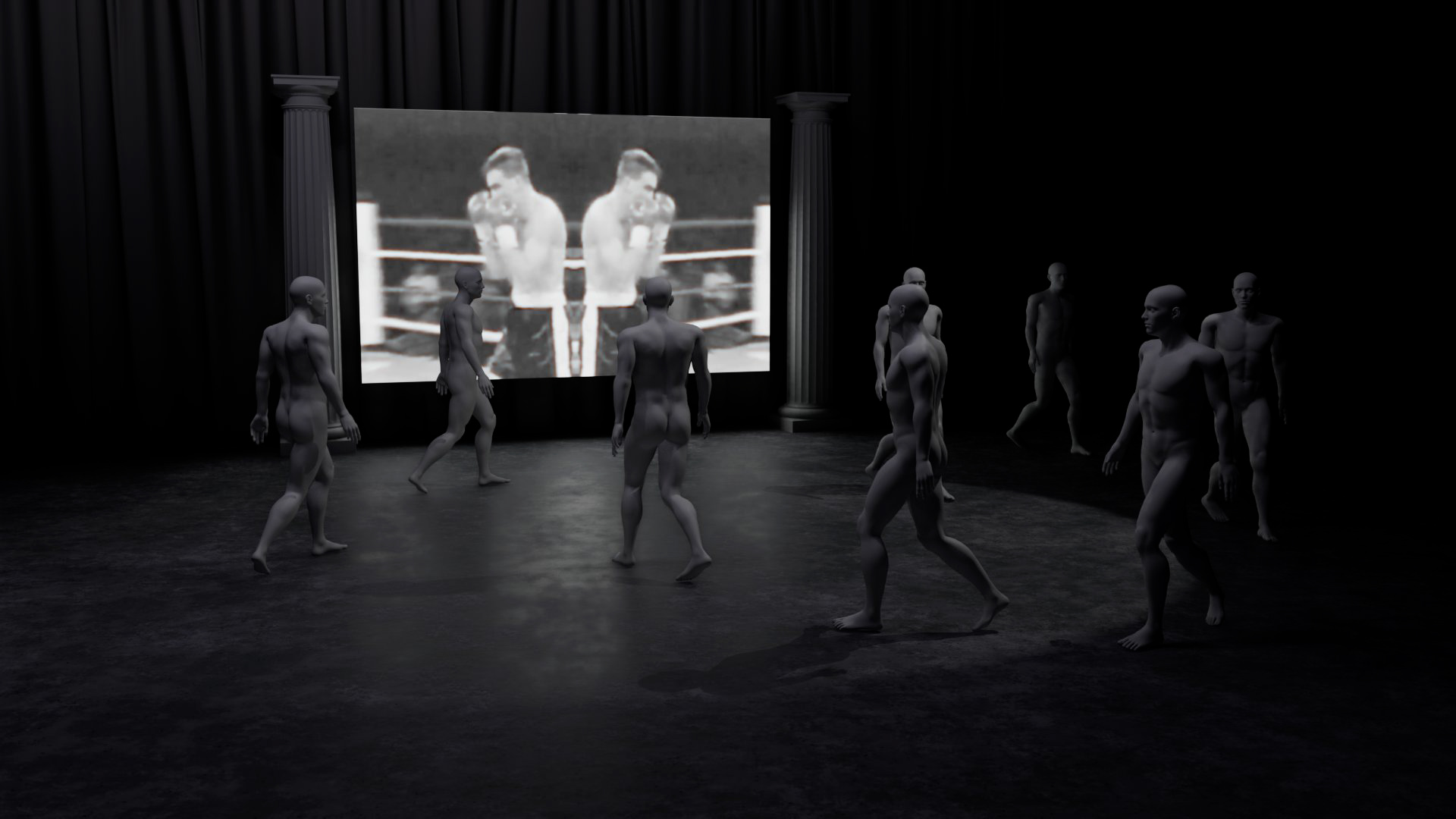
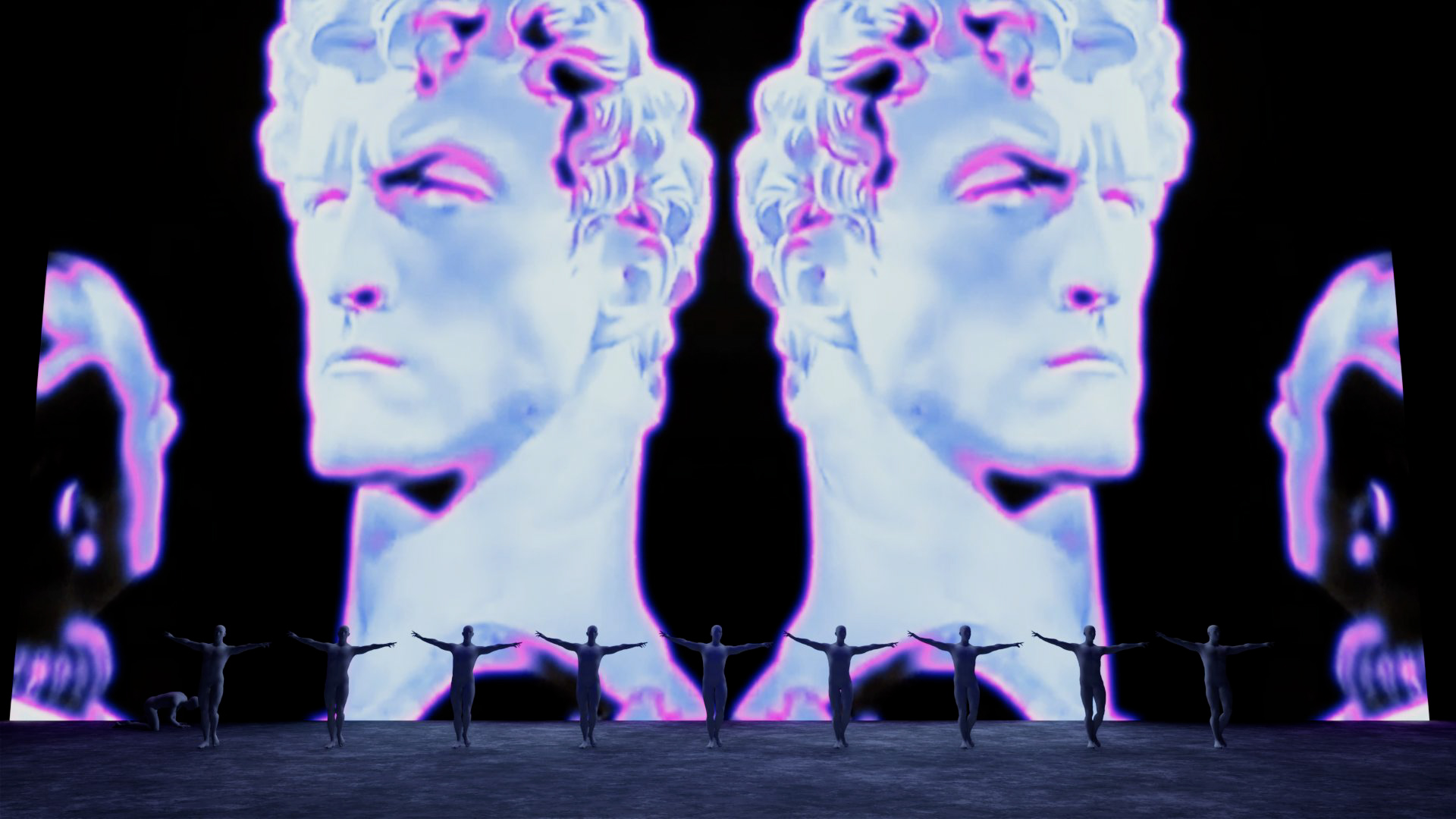
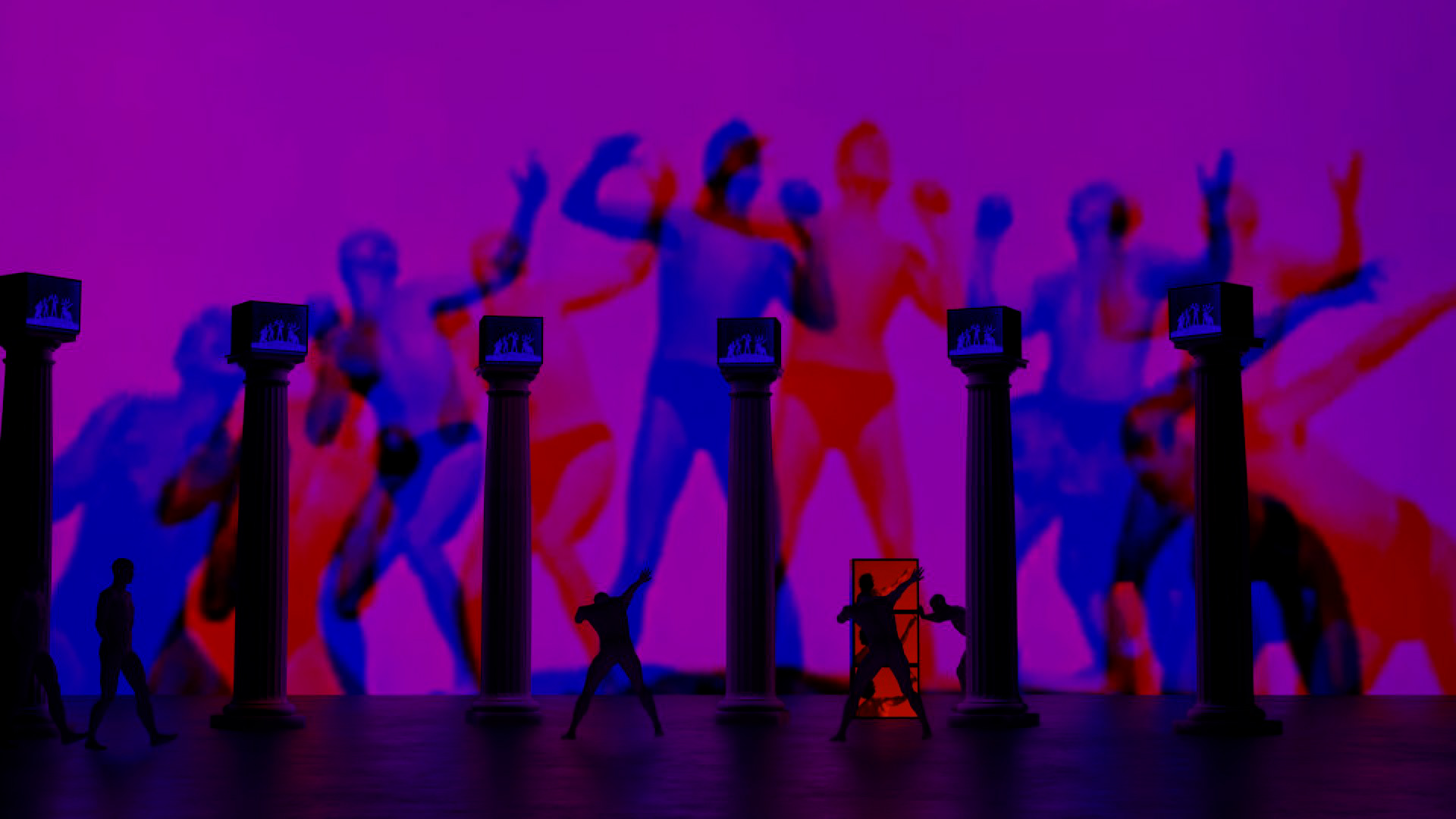
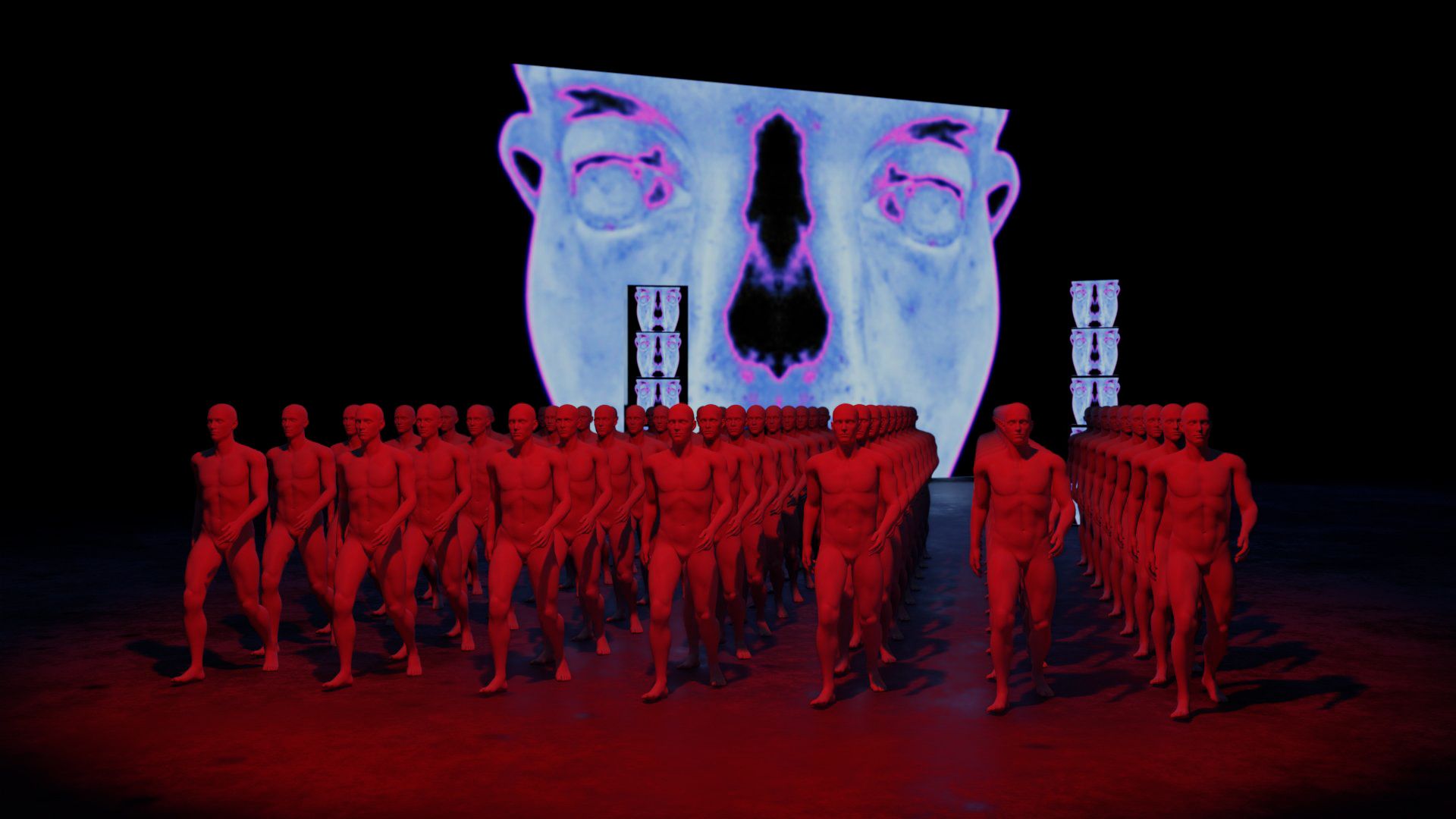
rhythm
3D Videoanimation, 16:9, HD, Sound, 20:10 Min.,
2025